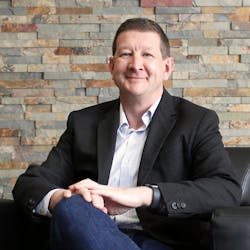Clarifying Sustainability Standards Through Commercial Furniture
In the past couple of decades, sustainable design has become virtually standard practice for many design firms, large and small. This shift has been accompanied by a surge in the number of sustainability standards, green building rating systems, ecolabels and third-party certification programs that have contributed to complexity and oftentimes confusion for designers and specifiers.
i+s recently sat down with Steve Kooy, technical director, health and sustainability for BIFMA, the organization that’s responsible for developing the level certification label, on the “I Hear Design” podcast for a conversation to help provide some clarity on sustainability standards and programs that are on the market. Below is an edited excerpt of the conversation (to hear the full episode, head over to iands.design/podcasts.)
i+s: How would you characterize where we are as an industry today with so many seemingly competing sustainability standards and programs that are available?
Steve Kooy: In the last five to 10 years, we’ve noticed that LEED has really done its job.People are using the criteria, they’re building it in and, therefore, it’s become not necessarily standard practice all the time—certainly the certification, but the overall expectations are built into specifications, design programs. With that, we’ve now seen a change in terms of focus. It’s no longer on the certifications themselves, it’s more on some key drivers that people are looking at more seriously. And the way I see it, the way we see it in the furniture business, it tends to be around chemistry still—clean chemistry—along with carbon or climate change. So, what are you doing to really combat climate change? And then another one that’s really emerging quickly is circularity.
i+s: Can you tell us a little bit more about BIFMA and how it relates to the level certification program?
SK: Sure. BIFMA stands for Business and Institutional Furniture Manufacturers Association, which is a lot there, but really it just says that we are a group of members that are primarily the manufacturers. […] And we’re looking primarily at commercial furniture, and we work on standards, we work on education and outreach, along with government advocacy. […] And from there come these standards, one of which is the E3 standard, which is what level is based on.
i+s: How does level integrate with popular green building rating systems such as LEED and WELL, for example?
SK: Our standards have always looked at LEED and WELL to integrate with them. All the way back to the beginning, when LEED was promoting recycled content, and low emitting furniture, there was a sense to adopt those types of activities in level certification as well. The goal is to harmonize as much as possible. The products certified are going to be just a subset of the overall project for [specifiers], so the idea is to make it a little easier for both the designer as well as the manufacturer, so they’re kind of speaking a common language.
i+s: How can specifiers find more detailed information or benefits for products that are level certified already?
SK: The easiest way to learn more about the program and what’s behind it, or even look at the products is to go to our registry (visit level.bifma.org or scan the QR code), which has all the products that are certified along with sustainability criteria. On the left-hand side of the web page you can look for things like targeted chemical elimination, whether a product has a life cycle assessment, low emission, low emitting products, things like that. We look at it as a way for architects, designers or even end users to go and shop for products, let’s say, that are looking at direct sustainability criteria as well.
To learn more, visit bifma.org or register to attend their upcoming virtual CEU at NeoCon titled, “Clarifying Sustainability Standards Through Furniture."
About the Author
Robert Nieminen
Chief Content Director
Chief Content Director, Architectural Products, BUILDINGS, and interiors+sources
Robert Nieminen is the Chief Content Director of three leading B2B publications serving the commercial architecture and design industries: Architectural Products, BUILDINGS, and interiors+sources. With a career rooted in editorial excellence and a passion for storytelling, Robert oversees a diverse content portfolio that spans award-winning feature articles, strategic podcast programming, and digital media initiatives aimed at empowering design professionals, facility managers, and commercial building stakeholders.
He is the host of the I Hear Design podcast and curates the Smart Buildings Technology Report, bringing thought leadership to the forefront of innovation in built environments. Robert leads editorial and creative direction for multiple industry award programs—including the Elev8 Design Awards and Product Innovation Awards—and is a recognized voice in sustainability, smart technology integration, and forward-thinking design.
Known for his sharp editorial vision and data-informed strategies, Robert focuses on audience growth, engagement, and content monetization, leveraging AI tools and SEO-driven insights to future-proof B2B publishing.





